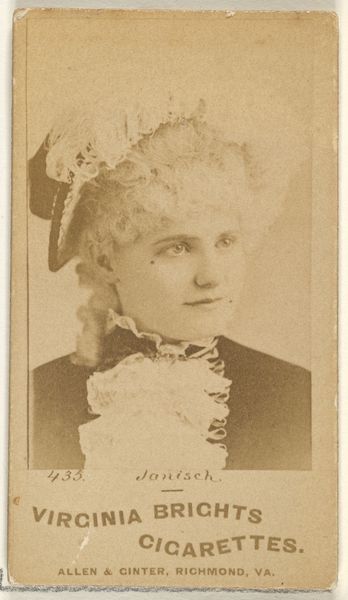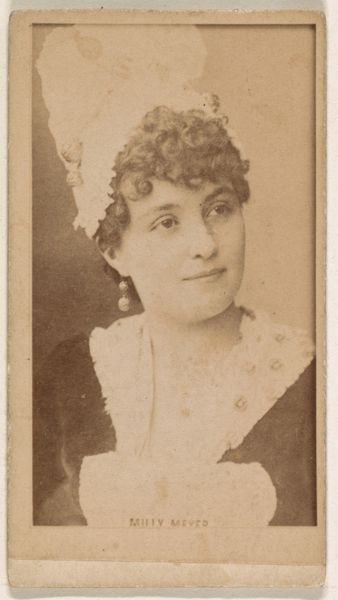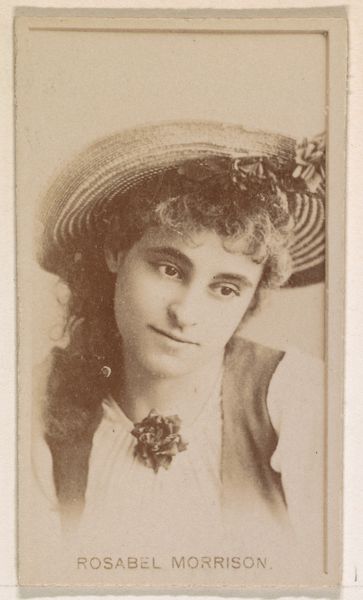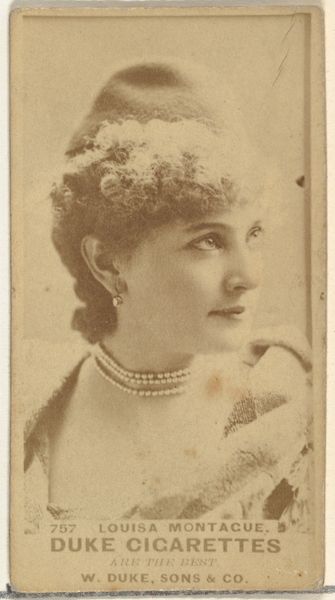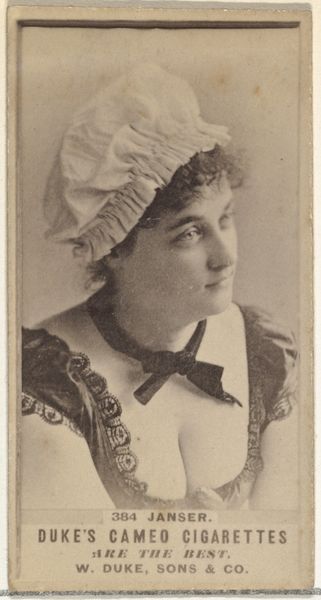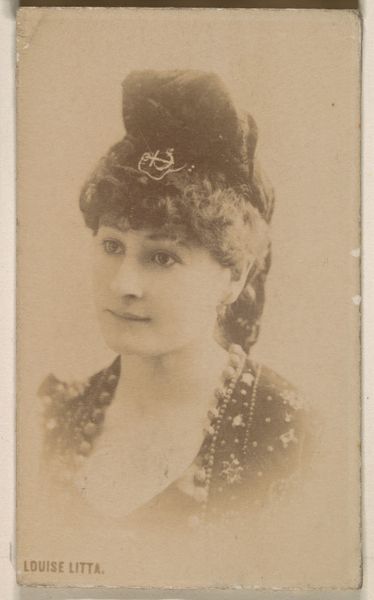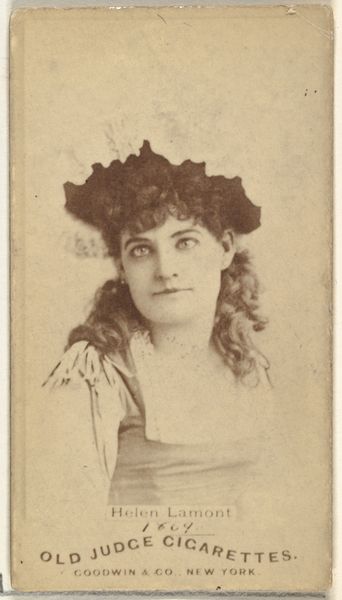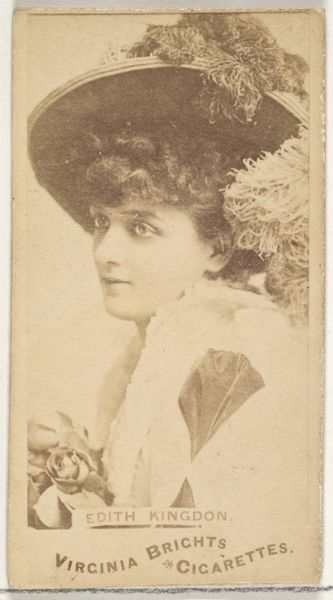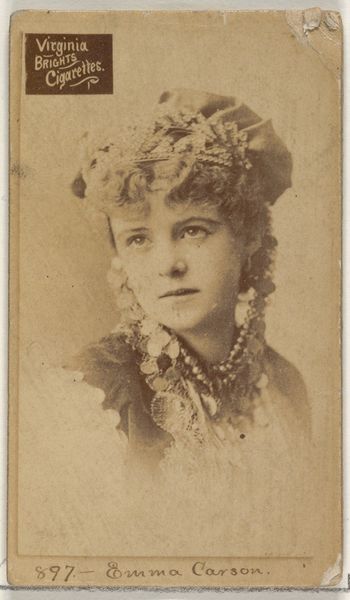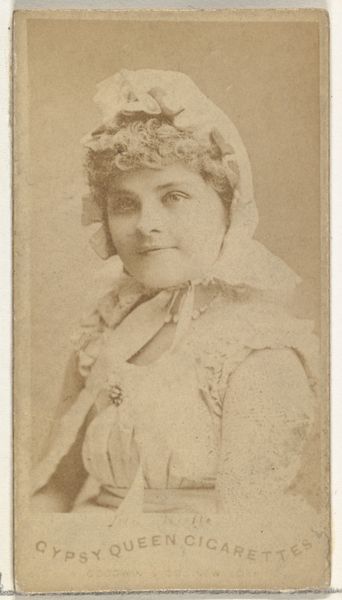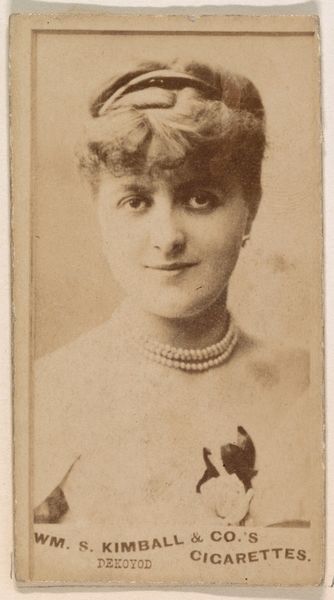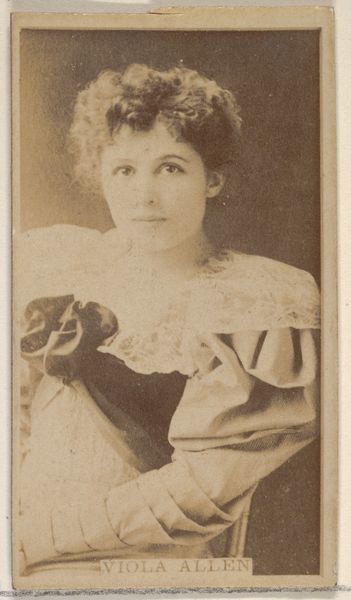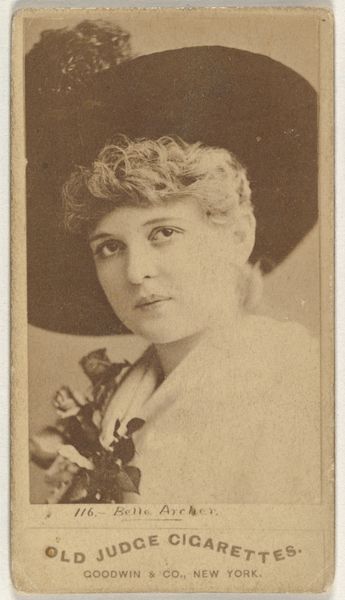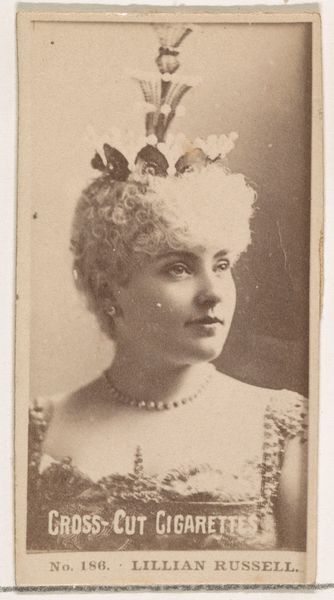
Emma Juch, from the Actors and Actresses series (N45, Type 1) for Virginia Brights Cigarettes 1885 - 1891
0:00
0:00
drawing, print, photography
#
portrait
#
drawing
# print
#
impressionism
#
photography
Dimensions: Sheet: 2 3/4 x 1 3/8 in. (7 x 3.5 cm)
Copyright: Public Domain
Editor: So, this is a portrait of Emma Juch, an opera singer, created between 1885 and 1891. It's from a series called "Actors and Actresses," used to advertise Virginia Brights Cigarettes. The photographic print feels so formal, almost staged. What strikes you about this image? Curator: What's interesting to me is precisely that intersection of commerce and culture. Cigarette cards, like this one, became hugely popular. They were essentially freebies, small images slipped into cigarette packs to stiffen them, and collectable. Consider how this affected the art world. Suddenly, portraiture – typically reserved for the elite – became democratized, reproduced en masse and circulated widely. Editor: So, it’s not necessarily about Emma Juch the *person*, but more about her image being used and distributed? Curator: Exactly. Think about the power dynamics at play. These images shaped public perception not only of celebrities but of ideals of beauty and success. Who was chosen to be on these cards, and how were they represented? These cards reinforced certain social hierarchies while also creating a new kind of fame accessible to the masses. Editor: That’s a fascinating point. I hadn't considered the social impact of what seems like a simple advertisement. Does this relate to other artworks or movements of the period? Curator: Absolutely. Consider the broader context of mass media and image production. The late 19th century saw an explosion of print culture, from newspapers to posters, and these cigarette cards were part of that visual landscape. How did this widespread availability of images impact artistic movements like Impressionism? Editor: I suppose it forces one to question authenticity. If everyone can see Emma Juch, is her actual presence or artistic contribution valued less? Thank you, it really highlighted how the social role of this artwork carries immense weight, more than its artistic merit. Curator: Indeed. It really encourages us to examine how cultural artifacts can shape social perspectives.
Comments
No comments
Be the first to comment and join the conversation on the ultimate creative platform.
